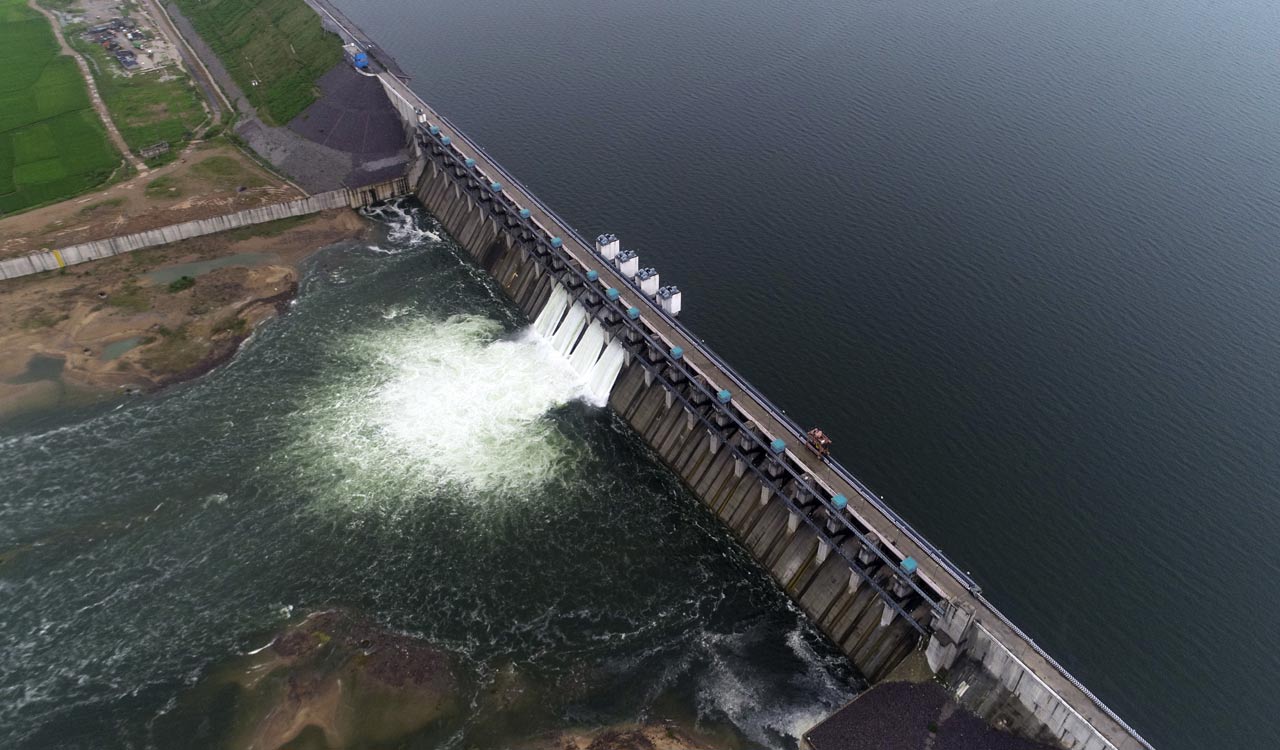
But certain structural issues observed in the project have to be addressed on permanent basis on the 57-year-old major irrigation project.
Published Date - 31 March 2024, 07:25 PM
Hyderabad: The Irrigation Department is weighing the option of conducting a geophysical investigation on the Nagarjuna Sagar project as part of a comprehensive dam safety evaluation mandated by the National Dam Safety Authority (NDSA).
The Irrigation Department officials have planned to take up the exercise in coordination with all the stake-holders including the Krishna River Management Board as well as the Department of Water Resources, Andhra Pradesh.
The NDSA team which visited the project in the second week of February wanted irrigation authorities of the State to speed up the maintenance works so that they could be completed well before the onset of the monsoon.
But certain structural issues observed in the project have to be addressed on permanent basis on the 57-year-old major irrigation project.
The government of Telangana which was in operational control of the project, was taking care of the maintenance work year after year as it was tasked with the responsibility, while AP was expected to attend on the upkeep and maintenance of the Srisailam project.
But the system in place for the implementation of the NSP maintenance was upset because of the confrontation between the two States at the dam site late last year.
Though the government of AP sought to implement the maintenance works on its own, covering its part of the 26 crest gates and head regulators, the task was finally entrusted again to the Irrigation Department of Telangana.
The anomalies observed on the dam can be addressed only after a thorough investigation of the structure in toto, said a senior official of the department.
He explained that the geo-physical methods used in the investigation of dams were yielding better results. The geophysical investigation process has been a cost effective option too.
Considerable advancement has taken place over the years to geophysical investigation methods and their acceptability over geo-technical methods.
Efforts are on to coordinate with the river management authority (KRMB) and the water resources department wing concerned in the Government of AP. No progress in cracks.
The NDSA team had observed cracks on some piers of the dam and they needed repairs. Issues on the spillway reported by the NDSA team were to be addressed immediately.
But as the State Irrigation Department officials put it, there are no major issues that can be considered to be manifestation of structural concern.
Some hairline cracks were observed and marking of the cracks was already done in earnest. Some of the cracks were almost a decade old.
There is no progression in the size of the cracks for over a decade. Still such issues would be attended to on priority.
The NDSA team wanted clearance of grass and wild growth causing congestion in the downstream earthen embankment drains, which was already completed on war footing.
As suggested by the team, the replacement of instrumentation on the project was also in consideration, they added.





Leave a Reply